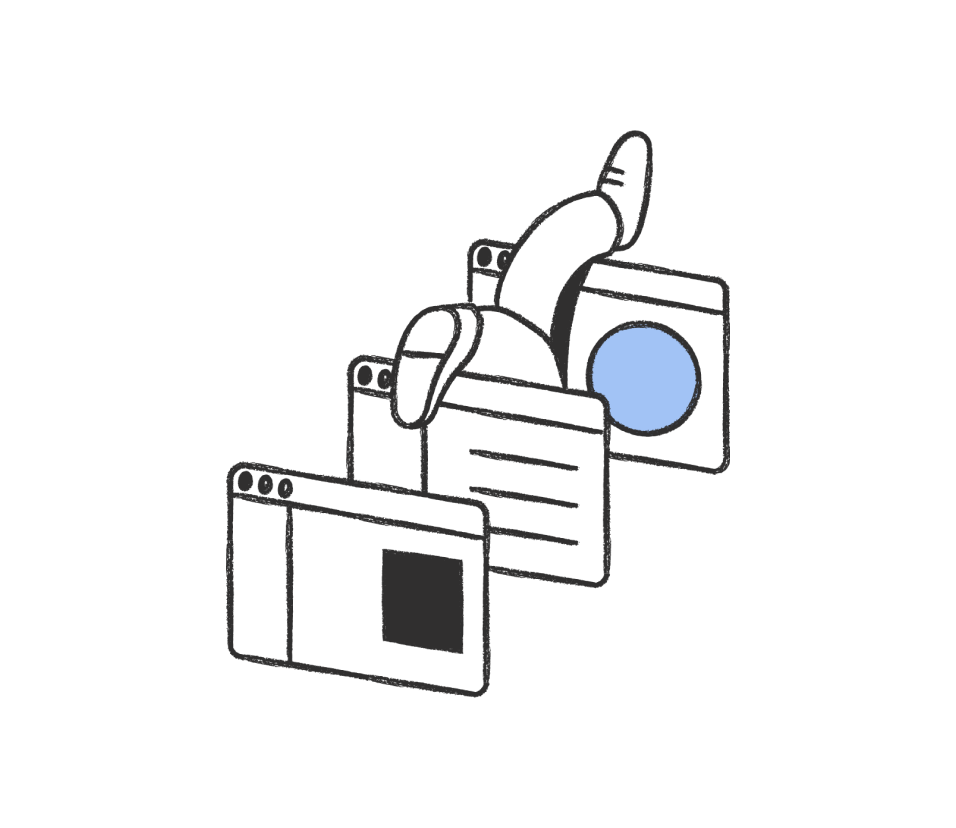Fraud is not just a problem for large corporations; small and medium-sized enterprises are increasingly becoming targets. We, at Slite, get phishing emails in our spam boxes too.
But there's good news:
If you have good processes, your team will be just fine.
Effective fraud detection is all about creating a culture of vigilance and implementing smart processes like regular audits. In this article, we'll cover the essential components of a strong fraud detection strategy.
4 Components of a Fraud Detection Report Template
The 4 most important components are risk assessment, internal controls, data analytics, employee training and awareness, and monitoring and reporting on fraudulent activities. We’ve learned that a multi-faceted approach works best. Here’s more on each component:
Risk Assessment
Start by understanding your vulnerabilities. Every business is unique, and so are its weak spots. Conduct regular risk assessments to identify where you might be exposed to fraud risk. For us, it meant taking a hard look at our payment processes and data storage practices. We take privacy extremely seriously which is why we needed to ensure they can store their company data with us, safely.
Internal Controls
Strong internal controls act as barriers against fraudulent acts. This could be as simple as requiring two-person approval for large transactions or as complex as implementing advanced software solutions. We use a combination of both at Slite.
Data Analytics
Use analytics tools to spot unusual patterns or anomalies in your financial data. We were surprised at how much we learned when we started analyzing our transaction data more closely, including identifying potential threats. Our People Ops Team regularly reviews spending analytics to flag anything out of the ordinary.
Employee Training and Awareness
Your team is your first line of defense. Regular training sessions can help employees spot potential fraud and know how to respond, effectively helping to prevent fraud. We make it a point to have quarterly refresher courses, and yes, we use our own Slite templates to keep everyone updated.
Our Security Lead, Florian, built an excellent security training deck to simplify security processes for the whole team. Mind you, Slite is a distributed team of knowledge workers across different cultures and timezones. It was a challenge to build a deck that helps everyone:
- Understand the basic concepts of security
- Why they should care
- What they can do
What makes it an excellent deck? It gets everyone aligned on the very first page:
For inspiration, you can view our complete security training deck here.
Remember, the goal isn’t to create a culture of suspicion, but one of awareness and proactivity.
How to write a Fraud Detection Report
Here’s what we’ve learned about creating these reports at Slite: Understanding and analyzing an organization's vulnerabilities is crucial in mitigating fraud risks, enhancing operational integrity, and preparing the organization to address potential fraudulent activities effectively.
Key elements to include in your report
- Executive Summary: Start with a brief overview of key findings. This should be concise yet comprehensive enough for busy executives to grasp the situation quickly. Ensure that the responsible teams issue reports to designated personnel and potentially to higher authorities if fraudulent activities are confirmed.
- Detailed Findings: Break down each identified risk or incident. Include data, timelines, and potential impact.
- Analysis: Provide context for your findings. Why are these issues significant? How do they compare to industry standards or previous reports?
- Recommendations: Suggest clear, actionable steps to address the identified issues.
- Supporting Data: Include relevant charts, graphs, or tables to visualize your findings.
How to present findings to stakeholders
Presenting your report effectively to stakeholders and other parties is just as important as its content.
Like Florian did with our security deck, you should:
- Use clear, jargon-free language
- Prioritize findings based on risk level
- Use visual aids to illustrate complex data
- Be prepared to answer questions and provide additional context
Remember, the goal is to inform and enable action, not to overwhelm.
How to use Slite's fraud detection report template
It’s designed to help you:
- Organize your findings logically
- Ensure you cover all crucial elements
- Present information clearly and professionally
Our template is customizable to fit your specific needs while providing a solid structure for effective reporting on customer activities.
By using a standardized template, we’ve found that our team can create consistent, comprehensive reports more efficiently. This allows us to focus more on analysis and action, rather than report formatting. Also, having a go-to template enables even the non-tech-savvy team members to independently write the reports, if needed.
Wait, Slite’s got more for your digital security
Our fraud detection report template is just one of many tools we offer to help businesses enhance their security and compliance efforts. Here are a few other features you might find useful:
- SOC 2 Type II certification
- GDPR compliance
- Identity Management
- Document verification feature to mark certain documents as verified, ensuring team members can trust the information
- Ability to share documents externally with controlled access
- Usage insights to monitor document access and usage
To explore these features and more, sign up for a trial or book a demo with our team.


